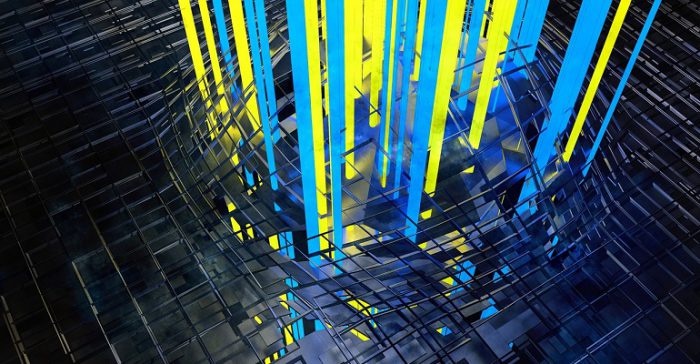This article was originally published on NPR, July 8, 2019
Experts Say U.S. Power Grid Needs To Change Before Shifting To All Renewable Energy
Listen to the podcast episode:
More cities, states, and even utilities are pledging to shift to all renewable energy. But experts say the nation’s power grid needs a lot of changes to make that happen.
AUDIE CORNISH, HOST:
Now in All Tech Considered, making the technology that powers your home more green.
(SOUNDBITE OF ULRICH SCHNAUSS’ “NOTHING HAPPENS IN JUNE”)
CORNISH: Utility energy – Xcel Energy made a splash last year. It pledged to deliver 100% carbon-free energy by 2050, meaning if you’re an Xcel customer, the electricity that you use for your lights, your refrigerator, your phone – all of that will be clean, free of the carbon emissions that contribute to climate change.
Xcel has a ways to go to meet that goal, and as Grace Hood of Colorado Public Radio reports, it doesn’t know how it’s going to get there.
GRACE HOOD, BYLINE: Xcel’s customers are spread across eight states, from Minnesota to the Dakotas to where I am, Colorado.
(SOUNDBITE OF DOOR CLICKING)
HOOD: I’m on the ninth floor of Xcel’s Denver high-rise. Drake Bartlett overseas real-time operations for the utility in Colorado.
DRAKE BARTLETT: An apt analogy would be to say these are kind of like air traffic control dispatchers.
HOOD: He’s talking about the three workers in front of him. Each has more than a dozen computer screens that track where power is coming from at any given moment.
BARTLETT: Our wind and solar right now are almost producing half of our load.
HOOD: The remaining half comes from natural gas and coal.
BARTLETT: As our customers use electricity, we’re constantly adjusting the amount of generation to match that usage.
HOOD: The job is harder when you have renewables in the mix. The sun doesn’t always shine, and the wind doesn’t always blow. Xcel Energy uses weather forecasts. It even has meteorologists on staff. It ramps up natural gas and coal plants when needed. But to become 100% carbon-free, they may need to get more clean power from other states and develop new technologies.
BARTLETT: As we move towards a carbon-free grid, we have ideas of how we’re going to get there, but there are other parts of it that we don’t know.
HOOD: Including how they’d move renewable energy across long distances. Rich Sedano heads up the Regulatory Assistance Project, a nonprofit focused on the clean energy transition.
RICH SEDANO: We’re going to need to have a lot of changes in the system to make a very high-penetration renewable system work.
HOOD: Sedano says one idea is to send renewable power from where it’s plentiful to where it’s most needed, from sunny California to the East, for example. But the nation’s grid is fragmented. It would take a system of efficient high-voltage transmission lines for this to work, and that doesn’t exist. Sedano says Congress would have to make that a higher priority.
SEDANO: Generally, we don’t get the kind of direction that will motivate these kinds of big-picture developments.
HOOD: Building those transmission lines could also cost billions, meaning cutting down lots of trees, and pose a major headache getting the right of way from landowners. The lack of political will and federal dollars means, right now, grid improvements are all local.
In Colorado, Xcel is spending hundreds of millions of dollars to update its grid so it can better manage intermittent power sources, like rooftop solar on homes. Drake Bartlett says in the future, it could also let customers hook up smart appliances that would run when electricity is cheaper.
BARTLETT: So the advanced grid allows that to happen. It’s an enabler, even though a lot of those technologies don’t exist yet.
HOOD: The stakes of getting this right are huge. Inefficient solutions could end up costing customers more. A worst-case scenario could mean power outages.
In Boulder, retiree Jerry Palmer is all about the future of 100% clean energy. He’s got an electric Toyota SUV.
JERRY PALMER: Plugging it in, and then you’ll see two lights come on here.
HOOD: He’s already got solar panels on his roof, but he’s thinking about going further, adding a big battery to store the excess solar energy he’s generating during the day so he can charge his car or run his TV on clean energy at night.
PALMER: Well, I could actually go off the grid and generate and store that energy right in my own garage.
HOOD: Ultimately, customers like Palmer are the ones who end up paying for local grid updates. That could set up another challenge if lots of people leave the grid to create their own carbon-free lifestyle before their utility can make that happen.
For NPR News, I’m Grace Hood in Boulder, Colo.
(SOUNDBITE OF MUSIC)
Copyright © 2019 NPR. All rights reserved. Visit our website terms of use and permissions pages at www.npr.org for further information.
NPR transcripts are created on a rush deadline by Verb8tm, Inc., an NPR contractor, and produced using a proprietary transcription process developed with NPR. This text may not be in its final form and may be updated or revised in the future. Accuracy and availability may vary. The authoritative record of NPR’s programming is the audio record.
